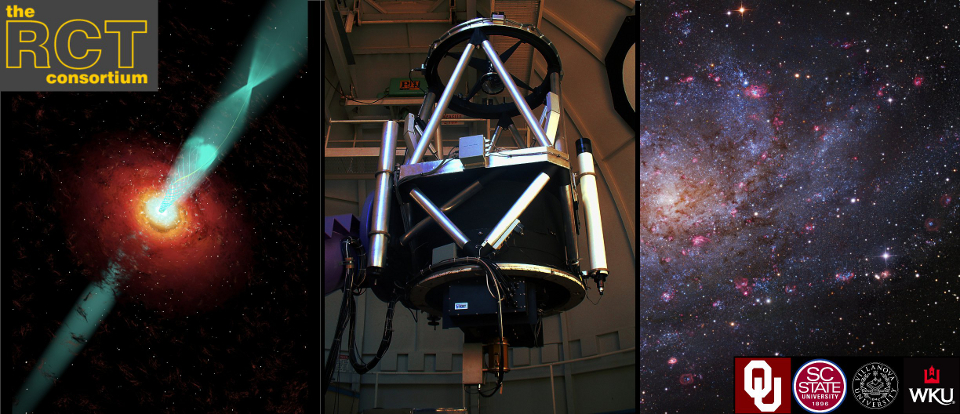In this post we summarize continuing efforts to monitor the strange behavior of M33 V19 in B and V using the RCT. With the ability of a robotic telescope to do time series observations, we hope to gain a better understanding of this ‘previously-a-Cepheid’ object’s unprecedented evolutionary behavior.
In 1926, Hubble determined the distance to M33 using 35 Cepheids he discovered, one of which was his Variable 19, with a period of 54.7 days, an amplitude in B of 1.1 mag, and a mean B magnitude of about 19.6. DIRECT project observations in 1996-7 with the 1.2m Whipple and 1.3m MDM telescopes and RCT observations, together with other data, clearly show that the star’s amplitude has diminished to less than 0.1 mag, while the star’s mean
brightness increased substantially.
Below is a another figure showing photometry of a fainter nearby Cepheid from both the RCT and the DIRECT project, showing that photometric quality is comparable.
